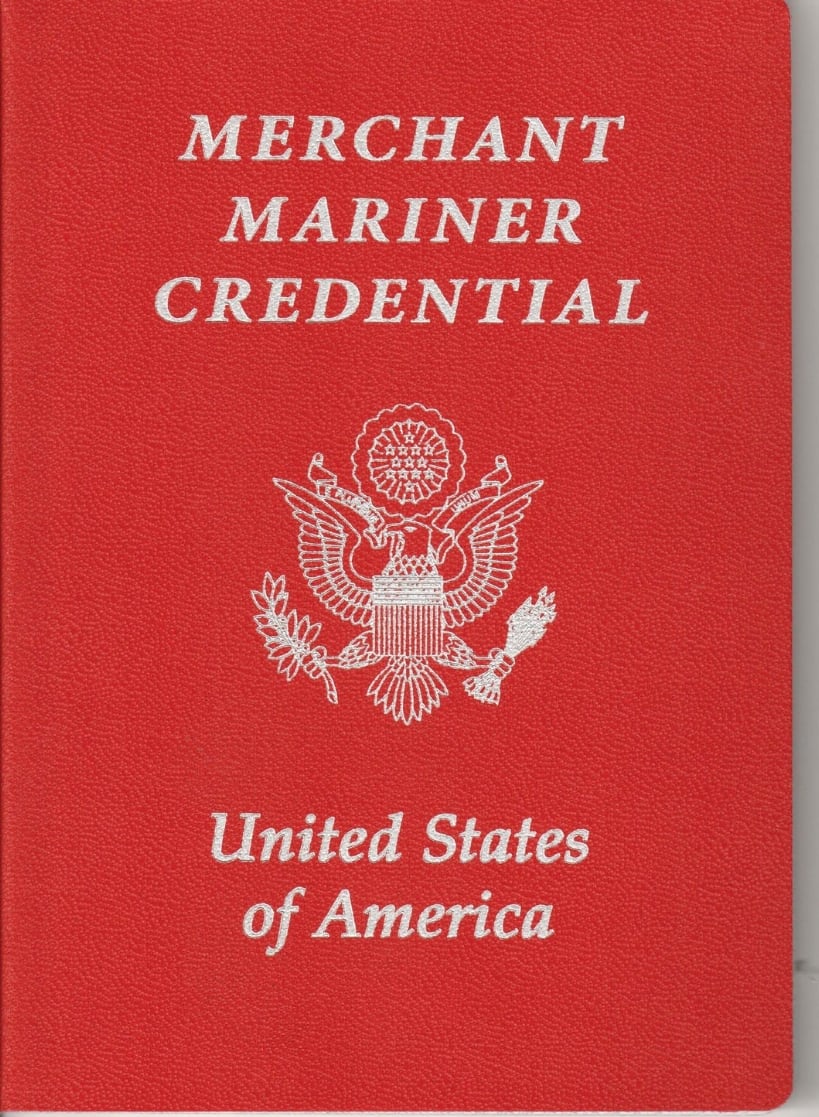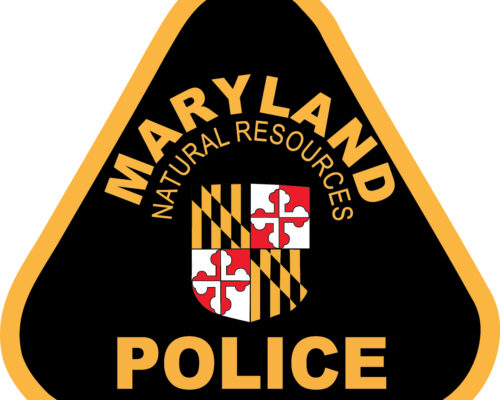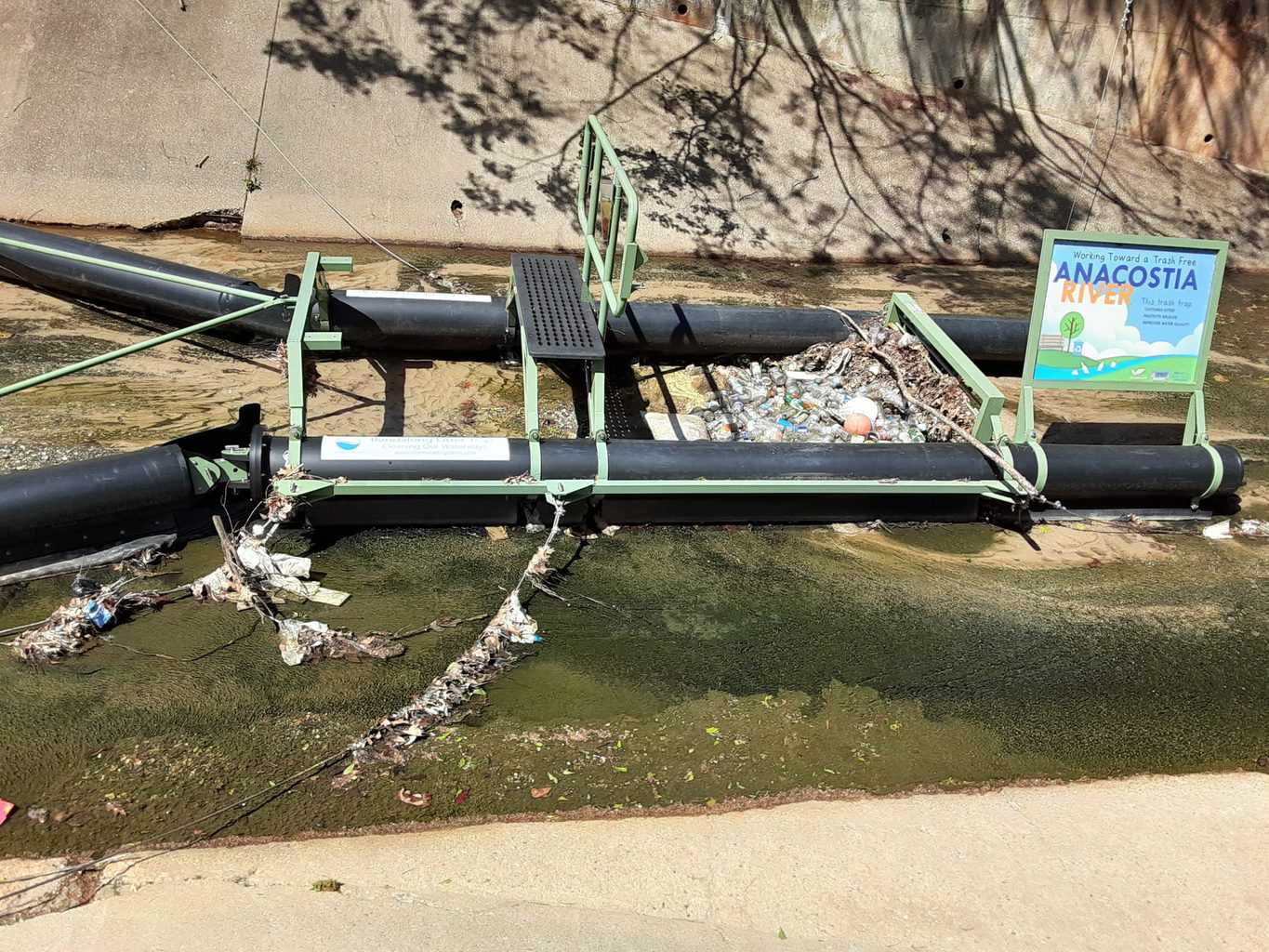Trash-intercepting devices have been steadily picking up steam in urban waterways on the Chesapeake Bay and around U.S. waters. Baltimore is well known for its “family” of personified Trash Wheels. (In fact, plans for a new Trash Wheel on Back River were just announced). Norfolk installed a floating Seabin at the Nauticus waterfront some years back that captured a big haul in just the first few months. The Anacostia River got a litter trap of its own in Montgomery County, Maryland, in 2020.
These ingenious trash-stopping machines had generally been limited to big-city areas… until now. The smaller Eastern Shore city of Cambridge just got its first trash trap, thanks to a team of clean water and anti-litter organizations.
The City of Cambridge worked with riverkeeper group ShoreRivers, Trash Free Maryland, The River Network (which provided funding), and Osprey Initiative (which brought in the device), to install a trash trap in Cambridge Creek last month.
The partners targeted Cambridge Creek because it’s a litter hot spot, evidenced by the trash cleanups ShoreRivers holds in that area. To underscore the need for a trash solution, volunteers held a cleanup on the same day the trap was unveiled…and gathered 15 bags of trash on that day alone.

Kelly Doordan, Executive Director of Trash Free Maryland, says this is the first time her organization has done a project like this.
Here’s how it works: Two litter booms are stretched across the inlet, working in tandem. The first boom slows the flow of water rushing out during a storm event. The second boom, located further out at a wider part of the outlet, is where Doordan expects to catch most of the trash. The booms have rigid flotation devices to keep them at the surface of the water, and they expect about a foot underwater, raising and lowering with the tide. There is plenty of habitat available below the booms to allow animals and fish to pass easily, Doordan says.
It is low-tech, she admits, but that makes the project cost-effective. It is relatively easily maintained by the city of Cambridge or volunteers, who will clean out the trash and collect data about what’s in there.
The boom setup is removable, too. That’s because the partners in this program are hoping to have it in place for just two years. Doordan hopes that once data is collected about what kind of litter is ending up in the trash trap—and where that litter may be coming from—that the problem can be prevented and the trash trap no longer needed.
For up to two years, the city will clean out whatever accumulates at the trash trap and record data on it monthly. That data will be analyzed like clues in a detective story. The partners can learn a lot from the types of materials and how degraded they are. “Is this new litter, or has the material been really degraded, out in the environment for a long time?” If it looks quite old, but is still showing up in the trash trap, that could mean that the source is an old pile or even a dump in the riverbank. Doordan says since Styrofoam food packaging is banned in Maryland, if they find new Styrofoam, it’s possible that intervention is needed.
Finding the source of the ongoing trash is important to reduce or stop it. Trash Free Maryland says studies find about 80% of trash found in waterways is generated on land. It deposits microplastics that can harm fish and birds, and ultimately, the recreational commercial value of our waterways. The stakes are high because any litter that ends up in Cambridge Creek could flow down the creek and into the crab and oyster-rich Choptank River.
If preventative steps do need to be taken, they would be most effective upstream to prevent the littering in the first place. Maybe there is a public trash can that frequently overflows, or a place where there isn’t a trash can that one should be placed.
“Cambridge is looking forward to seeing the tangible improvement in Cambridge Creek,” says Drew Koslow, the city’s Environmental Program manager.
The city and ShoreRivers plan to hold the first cleanout of the Trash Trap on Saturday, April 26—the first opportunity for folks to see the litter, bottles, and whatever else has been rounded up. Doordan looks forward to getting a sense of the data that can be learned from the trap. “It will tell as story as it’s collected,” she says.




